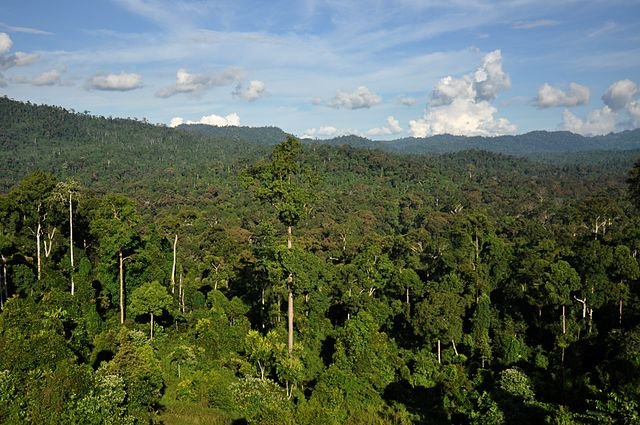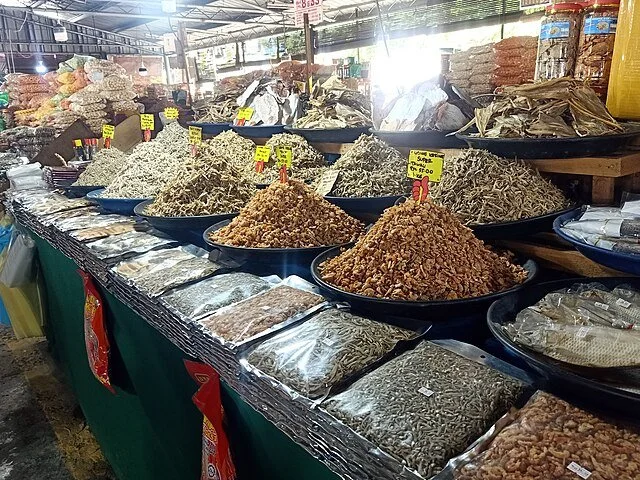Discover a natural and cultural paradise like no other on the island of Borneo.
An orangutan from the Borneo rainforest. Ridwan0810. CC BY-SA 4.0
Rainforests some of the most important and strangest ecosystems on the planet. Everything from tree frogs to pygmy elephants make their homes in these incredible oases of life, and they serve as the second biggest carbon absorber in the entire world, second only to the oceans themselves. And despite the best efforts of environmentalists around the world, these forests are starting to disappear.
The island of Borneo, the third-largest in the world, is almost entirely covered with one of the oldest rainforests in history. Dating back around 130 million years and filled with all kinds of wild animals that can only be found here, Borneo is an absolute paradise of the natural world. Borneo's land mass is divided between three countries, Indonesia, Malaysia and Brunei, sharing its unique natural beauty between them. Everything from proboscis monkeys, Sumatran rhinoceroses and seriously endangered orangutans can be found here (and in very few other places), making Borneo a once-in-a-lifetime experience.
An aerial view of Borneo’s rainforest. T. R. Shankar Raman. CC BY-SA 4.0
One of the most fascinating sights on the entire island is its uniquely complicated cave system. These caves are dotted all over the land and vary from the size of a bedroom to the size of an airplane hangar. Each one of these caves is already beautifully unique, but Gomantong Cave in Malaysia's Mulu National Park is especially worth a visit for a surprising reason: it’s inhabited by an estimated 2.5-3.5 million bats.
There are several guided and unguided tours through this cave, as the nightly flight of these bats has become famous over the years. The bats generally make themselves known between 5 and 6 p.m., so most tours will take place during the evening. The hike to the cave generally takes about 45 minutes and runs directly through a patch of rainforest, so there’s a chance that you’ll also catch a glimpse of the many wandering monkeys found all over the island.
The inside of Gomantong Cave. Laura. CC 2.0
For the more claustrophobic traveler, or someone who really doesn’t want to step in guano, Borneo also offers a variety of water-based tours along its many rivers and past the historic village of Banting. Made up of the longhouses and rice paddies that have made it famous, Banting is completely inaccessible by road and can only be reached from the water. The longhouses are huge wooden buildings on stilts along the banks of the rivers, housing several families under one roof and sometimes containing over 100 rooms.
More touristy locations include the city of Kota Kinabalu on the island’s northwest coast. Visitors can experience the atmosphere and energy of the famous street markets all over the city, many of which extend well into the night. Given its proximity to the coastline, Kota Kinabalu is also home to several gorgeous beaches, which are the perfect place for some snorkeling or diving to spot some of the vibrant and beautiful ocean creatures of the South China Sea. Visitors can also experience paddleboarding, sailing and sea kayaking along the coast.
One of the many stands at Kota Kinabalu’s famous street markets. Suyash Dwivedi. CC BY-SA 4.0
No matter what you come to Borneo looking for, you will find it somewhere on this island paradise. Borneo is dotted with hotels that range across the island, with most in Malaysia's Kota Kinabalu and the town of Kuching. Prices range from $20 to $100 a night, and even the cheapest are rated highly. The best time to visit is the wide swath of months between March and October, when the island is driest. This is also when the Borneo's famous wild orangutans are most active.
Ryan Livingston
Whatever it is, the way you tell your story online can make all the Ryan is a senior at The College of New Jersey, majoring in English and minoring in marketing. Since a young age, Ryan has been passionate about human rights and environmental action and uses his writing to educate wherever he can. He hopes to pursue a career in professional writing and spread his message even further..





